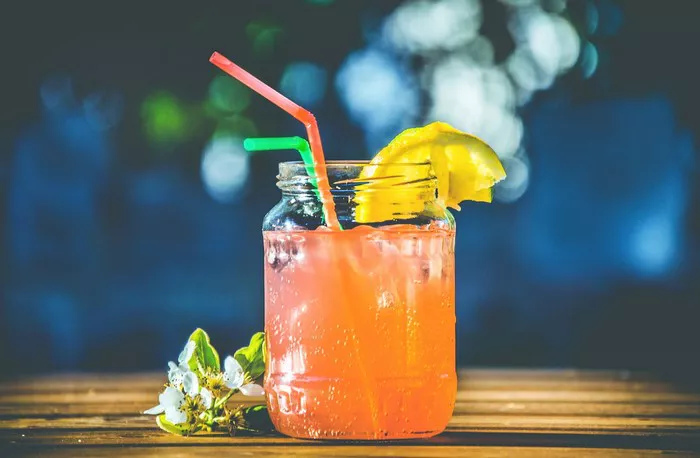Fruit cocktail, a delightful medley of various fruits, has been a beloved addition to desserts, salads, and snacks for generations. Among its colorful assortment of fruits lies a particular red fruit that often sparks curiosity and intrigue. It’s the crimson-hued gem that adds both visual appeal and a burst of sweetness to this beloved mixture. This article aims to unravel the mystery behind the enigmatic red fruit in fruit cocktail, exploring its origins, nutritional value, culinary uses, and more.
History and Origins of the Red Fruit in Fruit Cocktail
The inclusion of the red fruit in fruit cocktail dates back to the early 20th century when canned fruit mixtures became popular. Originally known as “fruit cup,” this medley gained traction as a convenient and appetizing way to enjoy a variety of fruits at once. Typically, fruit cocktail contains a combination of peaches, pears, grapes, pineapples, and cherries. It’s this last addition that brings forth the distinctive red hue.
The red fruit, commonly recognized as the maraschino cherry, has its roots in Europe, where cherries were preserved in maraschino liqueur, originating in Croatia. Over time, this preservation method evolved, leading to the creation of the familiar bright-red, syrup-soaked cherries found in fruit cocktail today.
Maraschino Cherries: The Red Fruit Identity
Maraschino cherries, also referred to as cocktail cherries, are processed cherries that undergo a series of steps to achieve their characteristic appearance and flavor. Typically made from sour cherries, they are pitted, soaked in a brine solution, and then bleached to remove the natural color. This process leaves the cherries with a pale hue. They are subsequently sweetened with sugar syrup, flavored with almond extract, and dyed red before being packed in jars or cans.
These cherries, with their bright red hue and glossy appearance, have become iconic in various culinary applications beyond fruit cocktails. They often adorn ice cream sundaes, top cakes and desserts, and serve as a popular garnish in cocktails, thanks to their vibrant color and sweet taste.
Nutritional Value and Health Aspects of Maraschino Cherries
Despite their appeal in enhancing the visual aesthetics of dishes, maraschino cherries may not offer significant nutritional value. They contain sugar, artificial colorings, and flavorings, with minimal fiber and vitamins compared to fresh cherries. The cherries’ sugar content, often high due to the syrup in which they are preserved, can contribute to increased calorie intake and may not be suitable for individuals monitoring their sugar consumption.
However, while maraschino cherries may not be a nutritional powerhouse, they still contain antioxidants present in cherries, albeit in reduced quantities due to processing. Antioxidants like anthocyanins and quercetin, known for their potential health benefits, are naturally found in cherries and may offer some health advantages even in their preserved form.
Culinary Uses Beyond Fruit Cocktails
Beyond their traditional role in fruit cocktails, maraschino cherries find their way into various culinary creations. Their vibrant color and distinct sweetness make them a favorite in baking, adding a pop of color and flavor to cakes, cookies, and pastries. Whether whole or chopped, these cherries bring a nostalgic touch to classic recipes like cherry-topped cheesecakes and pineapple upside-down cakes.
Furthermore, in mixology, maraschino cherries are a staple garnish for cocktails, particularly in classics like the Manhattan and the Shirley Temple. Their ability to complement and visually enhance beverages makes them a preferred choice for bartenders and home enthusiasts alike.
Evolution of Fruit Cocktails and Red Fruit Alternatives
While maraschino cherries remain a prevalent inclusion in fruit cocktails, modern variations and health-conscious consumer preferences have prompted the use of alternative red fruits. Some fruit cocktail manufacturers have opted for fresh or frozen cherries to offer a more natural and less processed alternative. These cherries retain their authentic flavor and nutritional value, providing consumers with a healthier option compared to the processed maraschino variety.
Additionally, other red fruits like strawberries, raspberries, or cranberries have been introduced into fruit cocktail blends, adding diversity in taste and nutrients. These alternatives cater to consumers seeking variety and a departure from the overly sweet, processed nature of maraschino cherries.
Consumer Preferences and Industry Trends
Consumer awareness regarding artificial additives and health concerns has influenced the food industry, prompting a shift toward more natural and healthier options. Consequently, fruit cocktail manufacturers have responded by offering products with reduced sugar content, using natural sweeteners, and prioritizing real fruit over processed alternatives.
Moreover, consumer demand for transparency in labeling and ingredient sourcing has prompted manufacturers to disclose information about the ingredients used, enabling individuals to make informed choices based on their dietary preferences and health considerations.
Conclusion: The Enduring Allure of the Red Fruit in Fruit Cocktail
In conclusion, the red fruit in fruit cocktail, represented by the maraschino cherry, holds a special place in culinary history and continues to be an iconic element in various dishes and beverages. Despite its processed nature and limited nutritional value, the maraschino cherry’s visual appeal and sweet taste have cemented its status as a beloved garnish and ingredient.
However, evolving consumer preferences have led to the emergence of alternatives and a renewed focus on healthier, more natural options in fruit cocktails. Whether it’s the traditional maraschino cherry or fresh, whole fruits, the red fruit in fruit cocktail remains a symbol of sweetness, color, and culinary creativity, captivating taste buds and sparking curiosity across generations.


